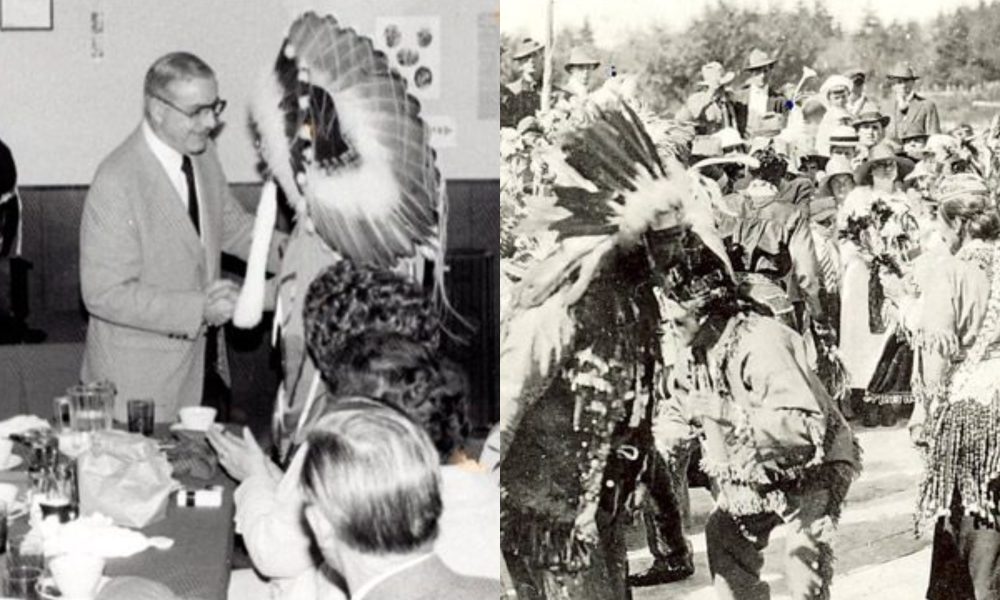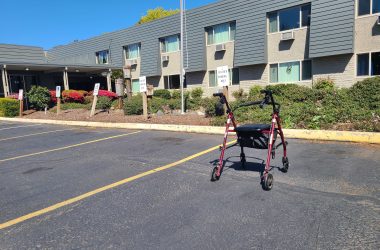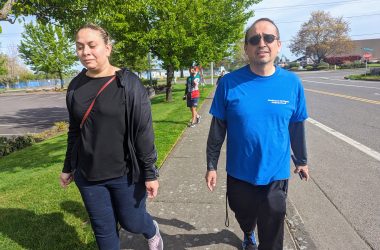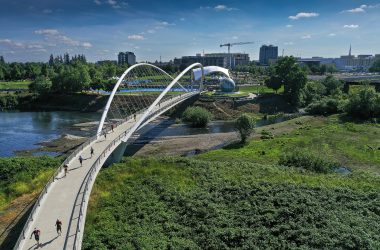November is Indigenous History Month, and this month I’ve been researching accounts of life in Salem when the Indigenous Kalapuyan people were still living here.
For thousands of years a diverse number of Indigenous tribes and bands inhabited what is now Salem here in the Willamette Valley.
The Confederated Tribes of the Grand Ronde Reservation and the Confederated Tribes of the Siletz Indians includes approximately 30 of these tribes and bands, some of whom used to live in this region and were resettled to new reservations by the federal government.
A wonderful account can be found in Lewis Judson’s recollections of the early history of Salem in the 1955 Marion County History Volume 1, published by the Marion County Historical Society in their article: “Remembrances of Lewis Judson” compiled by George G. Strozut, Jr.
Lewis writes:
It is mainly from my father that I remember many things about the early history of Salem and the Indians. My grandfather was Reverend Lewis Hubbell Judson II who came to Oregon with Jason Lee on the Lausanne in 1840… My father was Robert Thomas Judson who was born April 12, 1842 in the Jason Lee house. Robert spent his youth among the Indian children, and he learned to speak the Indian language as they spoke it themselves.
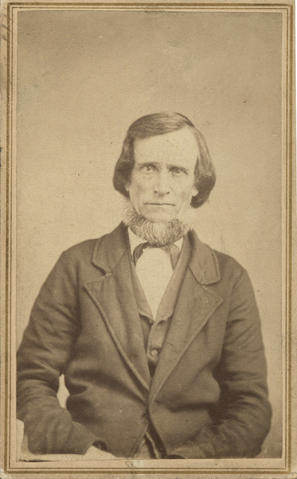
The Confederated Tribe of the Siletz Indians who now live on the central Oregon coast includes 27 tribes and bands who were consolidated by the first treaty signed in Oregon in 1853. In 1855 President Franklin Pierce signed an executive order creating the Coast Reservation- later known as the Siletz Reservation, comprising 1,382,400 acres extending north and south about 100 miles from Cape Lookout to Tahkenitch Lake and inland about 20 miles. This area was originally closed to non-Indian settlement. The Grand Ronde Reservation was established by treaty and an executive order on June 30, 1857.
Lewis writes:
Father often served as interpreter for them, and for thirty years after they were taken to their reservations, he and Grandfather spent much time with the Indians. Father had his own Indian name – Skukahois- a local Indian name for the native cotton tail rabbit. He received the name because he was so small and very active. I was born December 12, 1878, and my father did not pass away until February 21, 1904, so I have many enjoyable memories of the Indians in the valley and especially of the stories my father told me over a half-century ago…
They were a people of few words and spoke in a low voice. An Indian would say four or five words, then wait or sit awhile in silence, after which he’d say four or five more words …
This Indian language was used to name every place where they camped, fished, hunted, made homes, or gather together. But when the white men came, the Indians were discouraged from using their own religion and language, so the original names just “faded away.” Most of the whites didn’t try to learn the natives’ language, and we now realize that most of the original, picturesque Indian names are forever lost. Those that remain are largely of English pronunciation, which the Indians certainly wouldn’t recognize now…
In 1856, twenty-two years after the first arrival of Jason Lee in the Willamette Valley, Indians who were left, after the white man’s diseases had taken their toll, were removed by treaty from their ancient homes to some of the poorest land in the valley. I think it was a shame that the government did not take better care in making certain that the Indians would get all their food, clothing, and shelter which they were supposed to receive. While it is true that a portion of the government’s agreement was carried out, it is also true that some of the necessities were never delivered to the Indians.
On August 13, 1954, Congress passed the Western Oregon Indian Termination Act, which terminated federal recognition of tribes located in western Oregon in a stated effort to assimilate Indigenous people into mainstream U.S. society. In 1952, the first draft of the bill allowed for the tribe to keep the land they had been allotted. In 1953, a second termination bill was drafted, which stated that tribal members were required to purchase their own land from the federal government.
After this act was signed by President Dwight Eisenhower, it resulted in the termination of the tribes’ federal recognition, their loss of all treaty rights and land as well as all obligations that had been negotiated through treaties between the U.S. government and the Tribes of the Grand Ronde. A total of 63 tribes were terminated under this Act. The Siletz reservation was closed in 1954, and the lands taken from the Siletz. The Grand Ronde Reservation was officially closed in 1956 and the people of both the Grand Ronde and the Siletz were left without any services in health care, education or welfare support.
While some tribal members were able to buy their land and stay on their property, many tribal members had to move because they could not afford to buy their land. Margaret Provost, Grand Ronde Tribal Elder stated, “At the stroke of a pen, they wiped us away.”
Patty Jenness has created a video where you can hear Margaret speak about living through termination which can be watched here: https://youtu.be/QyvKAjKBLOk.
In addition to losing their lands, access to health care, education and federal recognition, members of both the Siletz and the Grand Ronde initially lost their connection to each other within their own tribes. However, through the 1960s and early 1970s, they each worked separately to restore what they had lost.
On December 17, 1975, Congress considered the Siletz Restoration Act, and in 1977 the Siletz Tribe was the second tribe in the nation to be recognized and restored by the federal government. In September 1980, President Jimmy Carter signed Public Law 96-340m creating a 3,063 acre reservation for the Confederated Tribes of Siletz Indians in Oregon. Congress passed the Grand Ronde Restoration Act on November 22, 1983, creating the Confederated Tribes of the Grand Ronde.
The 45th Annual Siletz Restoration Pow-Wow was held at the Chinook Winds Casino for their members on Nov. 19. The Confederated Tribes of the Grand Ronde 39th annual Restoration Celebration washeld for tribal members on Nov. 22 at the Spirit Mountain Casino.
If you are interested in learning more about one of the Indigenous languages originally spoken here in the Willamette Valley, the Confederated Tribes of Grand Ronde have developed the Chinuk Wawa language app. This app offers language, practice games, and quizzes in everyday categories such as food, family members, colors and numbers. It also offers a culture section that includes historical photos, basic tribal history, and songs and stories in both Chinuk Wawa and English. Chinuk Wawa is a free application which is available for Apple iPhone and iPad devices, as well as most Android devices.
Charles Wilkinson has written a history of the Siletz called “The People are Dancing Again”, and you can hear a short overview by Charles here: https://youtu.be/NEtAIGxp6pc
The Siletz have also produced a video, “Skookum Tillicum: The strong people of Siletz” summarizing this history from the perspective of tribal members which can also be found here: https://youtu.be/vdSyQgOkats
For a more comprehensive overview of the history indigenous treaties in Oregon including termination and restoration you can watch OPB’s Broken Treaties: An Oregon Experience, produced in 2017.
Editor’s note: This column is part of an effort from Salem Reporter to highlight local history in collaboration with area historians and historical organizations. If you have any feedback or would like to participate in Salem Reporter’s local history series, please contact managing editor Rachel Alexander at [email protected].
JUST THE FACTS, FOR SALEM – We report on your community with care and depth, fairness and accuracy. Get local news that matters to you. Subscribe to Salem Reporter. Click I want to subscribe!
Kimberli Fitzgerald is the city of Salem's archeologist and historic preservation officer. She is a regular contributor to Salem Reporter's local history column.

